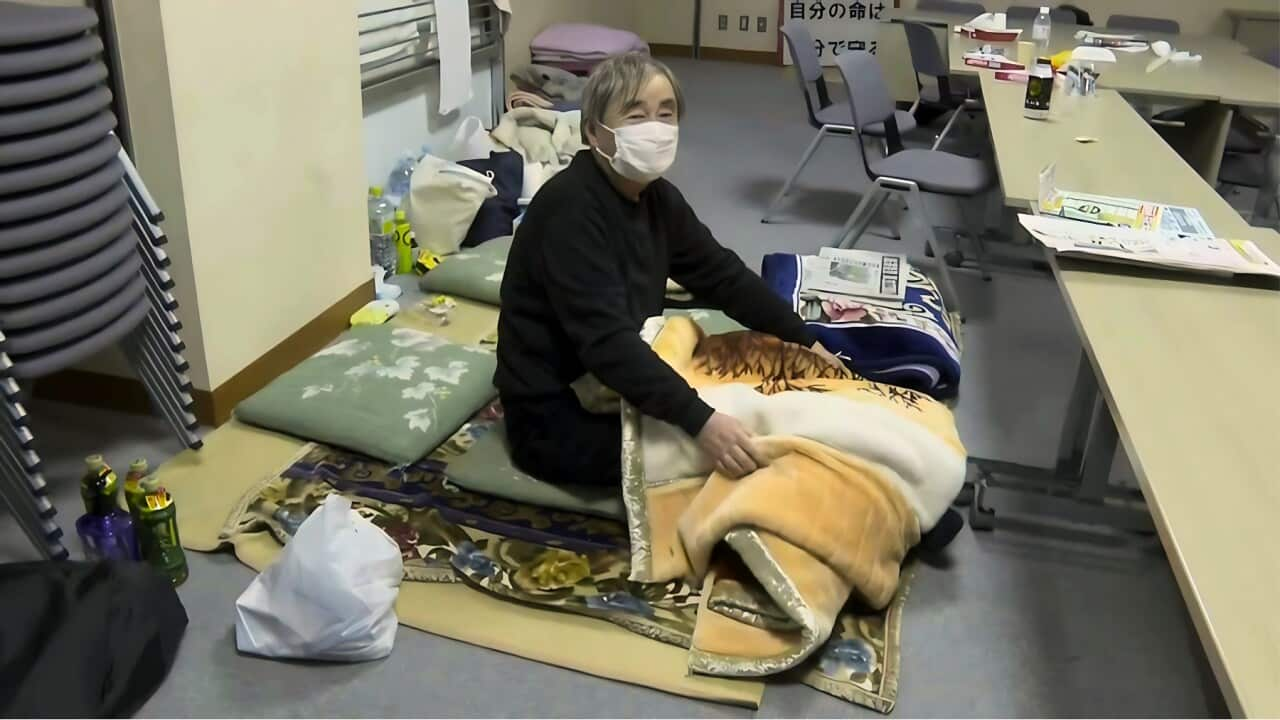SBS Asia Correspondent Aaron Fernandes is reporting from Wajima in Japan
TRANSCRIPT
Digging through piles of rubble with hand-tools, police officers in the Japanese city of Wajima desperately search for victims of the deadly New Year’s Day earthquake.
The 7.6 magnitude quake levelled homes across the Noto Peninsula, but Wajima is ground zero.
One neighbourhood of the traditional fishing town resembles a war zone, thanks to a major fire that tore through after the earthquake.
A week later, dozens of police officers were in that location, working in two-hour shifts to recover the remains of four people who lived and its believed died there.
“According to information we received, they were at the house when the earthquake hit. They have since been reported missing, so we’re here to find them.”
The recovery team battles fatigue and frostbite, and finds human remains while SBS News was at the scene.
Mr Ebita says finding the remains of the victims here is necessary to provide closure to the families.
“Today, we are digging carefully through the rubble. But now the snow is coming so quickly, that we have to work even faster. The snow makes it even more difficult to find what we’re looking for.”
A week after the quake, Wajima looks and feels very much like the set of a movie. It’s eerily silent, interrupted only by the only sounds of creaking of buildings, helicopters overhead and people trying to salvage their belongings.
SBS News met twenty-seven year old delivery driver Ryouzo Kitano, as he was desperately trying to salvage his family’s belongings.
The house he was raised in was damaged but still standing. But the intense shaking of the earthquake had turned the inside of the home upside down.
A clock on the wall stopped the moment the earth quake hit, at 4:10pm on January first.
Ryouzu says he and his parents were lucky to escape with their lives.
“My dad and mum survived because they were on the first floor. The three of us ran out into the street and waited in the middle of the road for the shaking to stop.”
There have been more than one thousand aftershocks reported since New Year's Day, and many residents across the Noto Peninsula live in constant fear, that damaged homes could still collapse.
Ryouzo’s parents are too old to help with the clean-up. He works quickly on his own to salvage what he can, and says he’s worried that aftershocks could still bring the house down.
“My mum and dad are really shaken. They are very quiet, and staying at an evacuation shelter today.”
Damage by the earthquake to roads and infrastructure is slowing aid. Water supply has been impacted to around 90-thousand households in Ishikawa and its surrounding prefectures, with food and fuel supplies now running low.
Japan’s government says it's working to improve conditions, but frustration is growing over the pace of its earthquake recovery efforts.
A week on from the disaster, tens of thousands remain without water and electricity, sparking concerns of disease and exposure to the cold.
SBS News visited several evacuation centres in Wajima and Nanao cities, observing hundreds of people sleeping on the floor, no running water and access only to a limited number of portable toilets.
Sixty-five year old Hisaaki Nakano was among around 200 people sleeping at an elementary school in Nanao. He left his home and says won’t go back, fearing more tremors might hit.
“It’s not very comfortable here, sleeping like this. But there are many earthquakes and I’m fearful. Even though my house is new, this place is safest for me.”
He is among nearly thirty thousand evacuees who now face an uncertain future unsure when or if they'll be able to return home.













